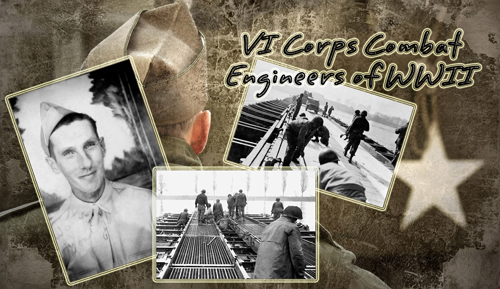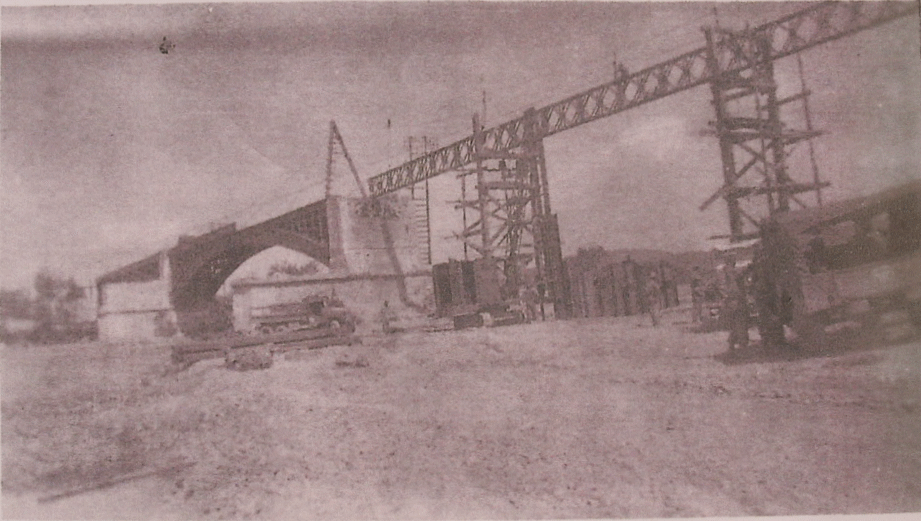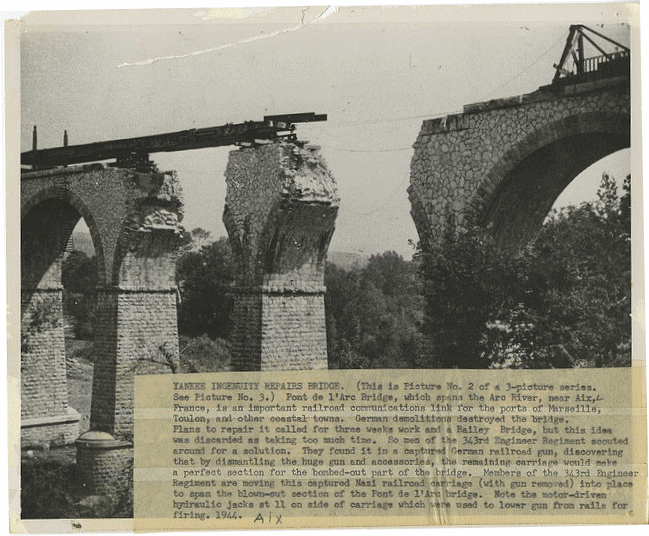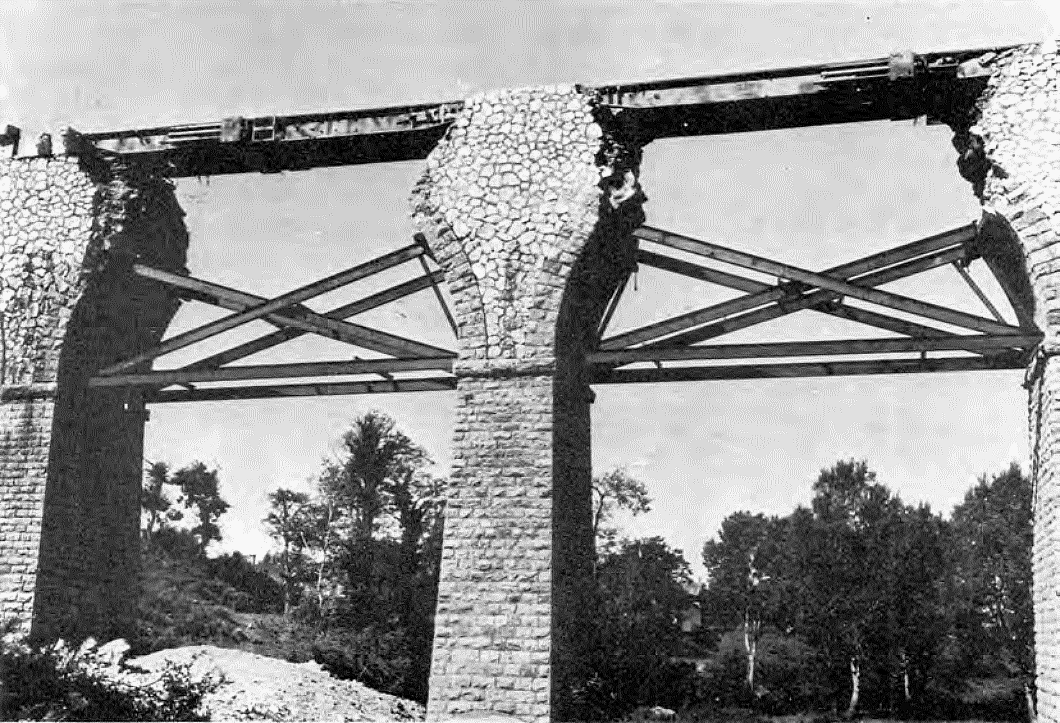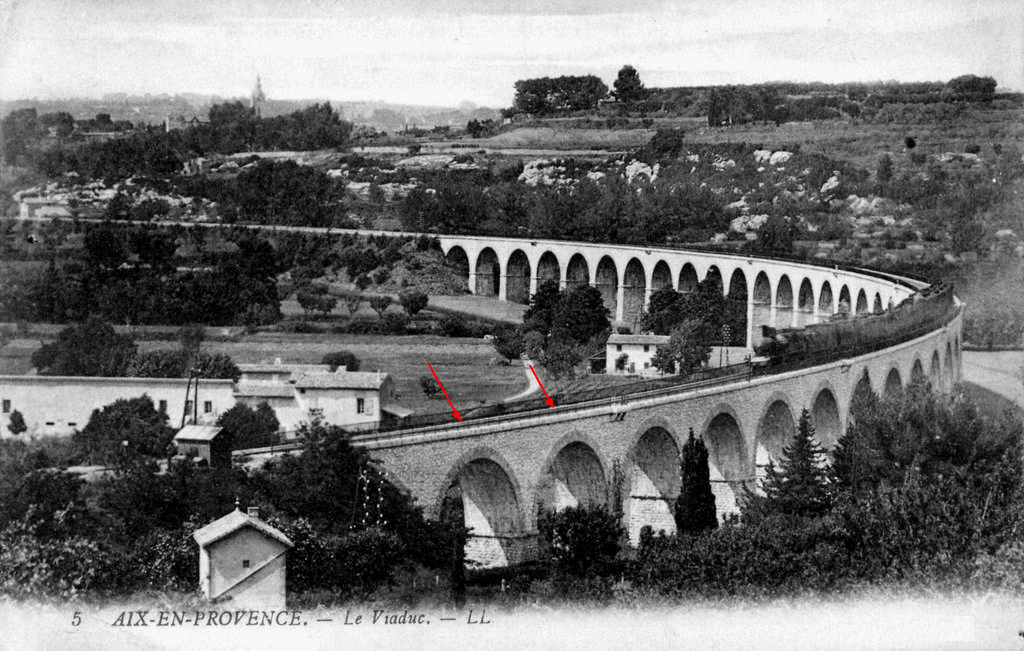My friend, and veteran Jim Davis, called me this week for more info on this bridge. Sent him what I had, including the journal entries from Armonde's page.
I also found this today and thought I would include it.
Railroads
Allied rail supply operations in southern France began on 23 August with short-haul bulk service lines out of Frejus to points less than thirty miles inland. The 40th Engineer Beach Group had begun collecting empty rail cars at St. Tropez on D plus 2 and added this equipment to the twelve locomotives and eighty cars found intact at Carnoules, within the beachhead area. As Coastal Base Section took over Marseille, the Army engineers retained responsibility for roads and rail maintenance out of the city. Damage to roads was slight, and the rails were usually only blocked by fallen debris. Where Germans had torn up trackage, French railroad employees replaced rails and ties with no difficulty.
From a point above Aix-en-Provence, twenty-five miles north of Marseille, the French rail net divided into two routes traveling north: a multiple track link running up the Rhone valley on both sides of the river and a single track branching east and then north to Grenoble. More steeply graded, negotiating mountain terrain, and subject to deep snows and frequent flooding, in the upland passes, the Grenoble route nevertheless had priority because there seemed to be far less damage along it than along the heavier duty Rhone alternate. The major breaks encountered in the southern end of the net were just southwest of Aix; at Meyrargues, ten miles north of Aix; and north of Sisteron at the confluence of the Buech and Durance Rivers.
The original plan for railroad repair left the entire job of major rehabilitation behind the armies to the engineers of the 1st Military Railway Service, scheduled for phasing into southern
France on D plus 30. When the advance up the Rhone valley got much ahead of schedule, bridge repair fell to the Seventh Army engineers, now forced to rely on their ingenuity and extensive stocks of locally procured materials. With heavy bridging steel sections still on convoys sailing from the United States or heading for Marseille from stockpiles within the Mediterranean, the engineers were working with a supply allotment adequate for D plus 14 operations when the combat elements had already taken D plus 60 objectives. General Davidson’s construction regiments picked up what they could to improvise structures to span German demolitions in the rail supply line.
L-5 Cub planes gave the engineers a head start on surveying the damage. Engineer officers with Speed Graphic cameras flew low-level passes over blown bridges, some behind enemy lines, shooting oblique-angle photographs to give construction troops a means of computing their material requirements.24
The 343rd Engineer General Service Regiment restored service to Aix in ten days by a stratagem that saved days in repairing a 104-foot gap in the rail bridge. In the area the unit found a German 270-mm. railway gun. Hauling it to the site, the engineers stripped the gun and the rail trucks from the traverse base of the piece and, attaching a ten-foot steel extension, launched the platform as the stringers for the new span across the void, Bailey fashion. The Aix bridge work was complete on 29 August. At the same time engineers were restoring the bridge at
Page 452
Meyrargues, a task made doubly troublesome by a rise in flood waters. After closing a 107-foot gap with the first Bailey railroad bridge in southern France, a quadruple-single span with a deck thirty-eight feet above the water’s surface, they opened the bridge to traffic on 18 September.
The 40th Engineer Combat Regiment forged the last link in the rail chain on the eastern route. A Class 60 span covering two breaks over the Buech River north of Sisteron, the bridge used stocks of local lumber and steel sections. The engineers replaced a destroyed 91-foot-high central masonry pier with a vertically emplaced triple-single Bailey panel. Supply traffic, moving 1,500 tons per day over this point after 22 September, could travel to railheads in the Poligny–Mouchard area, 130 miles north of Grenoble, relieving some transport problems as the 6th Army Group crossed the Moselle River.25
When the director general of the Military Railway Service, Brig. Gen. Carl R. Gray, Jr., brought his headquarters from Rome to Lyon on 14 September, he immediately began a more complete reconnaissance of rail damage. He then revised original priorities, concentrating on the double-track system up the Rhone valley to Lyon. General Gray told General Devers four days later that the main breaks in this stretch were at Livron, Avignon, and Valence; two smaller rail bridges outside Lyon, one over the Rhone and one over the Saone River, would have to be reconverted from use as vehicular bridges. Save for material shortages, the breaks at Valence and Avignon posed no problems.26
The 343rd Engineer General Service Regiment, assigned the job of opening the Marseille-to-Lyon route, began work on the Livron bridge on 7 September. Where before the war a masonry-arch bridge had carried a single track across the shallow, muddy Drome, there was now a 310-foot break with all the masonry piles blown. The low height of the original structure and the river’s slow current lessened engineering problems; the troops emplaced scarce steel I-beam stringers atop nine timber bents to open the line to rail-borne supply on 20 September, five days ahead of General Gray’s estimates. This performance, together with the 343d’s operation in the southern Rhone valley, earned the regiment Lt. Gen. Alexander M. Patch’s commendation.
On 2 October, the 344th Engineer General Service Regiment repaired a 410-foot single-track structure over the Doubs River at Dole, using thirty-foot-high timber bents, with standard Bailey forming the span. Opening the Dole route brought the railheads north to Vesoul and Besançon.27
At that point in the restoration, with railheads moving into the rear of the 6th Army Group area, German demolitions at the bridges had become the smaller supply problem. By mid-September General Devers found that where railroads were concerned, the “bottleneck now is cars rather than bridges.”28
Page 453
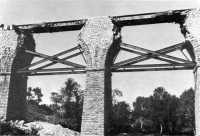
The Aix bridge, which used the carriage of a German railway gun
When the Allied drive slowed against stiffening German resistance at the Vosges Mountains and the defenses before the Rhine River, supply lines stopped growing. But the demand for ammunition rose alarmingly, and shortages persisted until the winter months. Trucks remained the principal means of transport until well into October, when new railroad rolling stock arrived at Marseille; in September trucks carried forward 222,000 tons of supply compared to 63,000 tons moving by rail. Engineer units had built eighty-eight highway bridges on the supply routes, mostly from local timber and steel stock.
After 30 October Seventh Army engineers divided responsibility for rail rehabilitation with the increasingly capable 1st Military Railway Service, whose units and equipment were now arriving more regularly. Army engineers reopened a northern loop in the rail service running from Epinal to Strasbourg through Blainville, Lunéville, and Sarrebourg, while the 1st Military Railway Service worked on a southern leg running from Epinal through St. Die to Strasbourg. The Military Railway Service refurbished the military rail line behind the First French Army on an axis running from Vesoul through Lure and Belfort to Mulhouse. In supporting the drive up the Rhone, the 1st Military Railway Service supervised the construction of forty-two rail bridges and the repair of nine between Marseille
Page 454
and Dijon by early 1945. At various times, the work continued to involve the 40th, 94th, 343rd, 344th, and 540th Engineer Regiments and the 1051st Engineer Port Construction and Repair Group.
With the winter lull in the advance, the engineers began to take up scarce Bailey panels laid down in the press of the rapid assault, replacing them with semi-permanent timber bent, steel, and wood deck bridging along vital roads and rail lines. During the last half of October the engineers consolidated the hoarded reserves for the thrust through the Siegfried Line, over the Rhine River and into Germany itself.29
